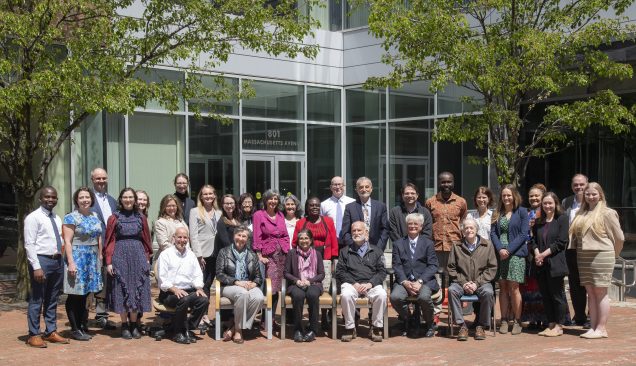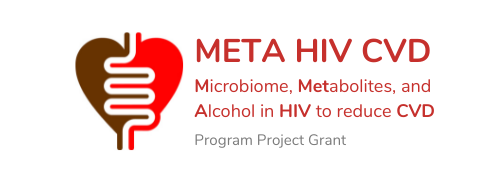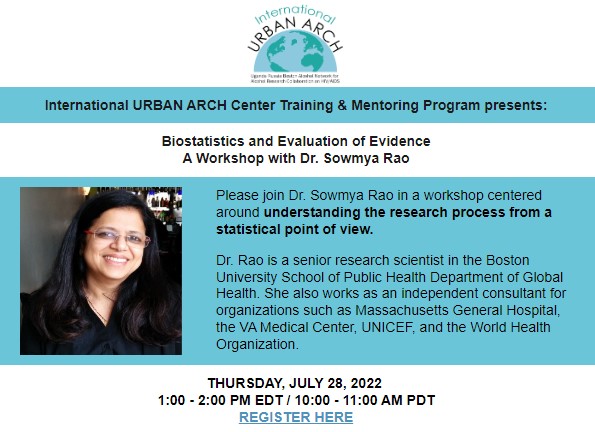Newsletter
Volume 9, Issue 2
April – July 2022
Check out the current issue of URBAN ARCH News, the quarterly newsletter bringing you news on the latest URBAN ARCH and related research.
Reflections from the 2022 URBAN ARCH Annual Meeting
In this edition of the URBAN ARCH Newsletter we recap the May 2022 URBAN ARCH Annual Meeting, which focused on key findings from the past 10 years of the URBAN ARCH Consortium.
Click on the buttons below to see what the International URBAN ARCH Center Cores and Projects have been working on.
Spotlight on… Jeffrey Samet
 In this issue, we interview Jeffrey H. Samet, MD, MA, MPH, the Principal Investigator of the URBAN ARCH Consortium and the new International URBAN ARCH Center, and Professor of Medicine and Public Heath at the Boston University Schools of Medicine and Public Health.
In this issue, we interview Jeffrey H. Samet, MD, MA, MPH, the Principal Investigator of the URBAN ARCH Consortium and the new International URBAN ARCH Center, and Professor of Medicine and Public Heath at the Boston University Schools of Medicine and Public Health.
Article Spotlight
Non-medical Opioid Use Associated with Increased Systemic Inflammation and Immune Activation Among People Living with HIV
In people living with HIV (PLWH), chronic immune activation and systemic inflammation have been associated with the development of AIDS and other adverse health outcomes. HIV-related factors can lead to immune activation and inflammation due to bacterial translocation from the gut, which is also impacted by opioid use. Russia ARCH researchers recently examined the association between non-medical opioid use and plasma soluble CD14 (sCD14), a biomarker that indicates the presence of a component of the bacteria cell wall used as a proxy for assessing immune activation and bacterial translocation. They also assessed levels of inflammation (interleukin-6 [IL-6]) and altered coagulation (D-dimer), biomarkers used to understand the link between non-medical opioid use and chronic systemic inflammation. Study participants were 351 PLWH who had not yet received antiretroviral therapy and who had current opioid use, prior opioid use, or never opioid use.
- In adjusted analyses, compared with participants who never had opioid use, sCD14 levels were significantly higher among participants with current opioid use (adjusted mean differences, 197.8 ng/ml).
- IL-6 levels were also higher for participants with current versus never opioid use (adjusted ratios of means [ARM], 2.10).
- D-dimer levels were higher for current (ARM, 1.95) and prior opioid use (ARM, 1.57), compared with never opioid use.
Comments: In this cohort of PLWH, current non-medical opioid use was associated with increased levels of biomarkers for immune activation and systemic inflammation. These findings have important implications for the care of PLWH who have non-medical opioid use; future research should explore the impact of medications for opioid use disorder on immune activation and systemic inflammation.
Reference: Kholodnaia A, So-Armah K, Cheng D, Gnatienko N, Patts G, Samet JH, Freiberg M, Lioznov D. Impact of illicit opioid use on markers of monocyte activation and systemic inflammation in people living with HIV. PLoS One. 2022 May 5;17(5):e0265504. PMCID: PMC9070930
New Workshop
New URBAN ARCH Publications
- Carroll JJ, Rossi SL, Vetrova MV, Kiriazova T, Lunze K. Supporting the health of HIV-positive people who inject drugs during COVID-19 and beyond: Lessons for the United States from St. Petersburg, Russia. Am J Public Health. 2022 Apr 1;112(S2);S123-S127.
- Kholodnaia A, So-Armah K, Cheng D, Gnatienko N, Patts G, Samet JH, Freiberg M, Lioznov D. Impact of illicit opioid use on markers of monocyte activation and systemic inflammation in people living with HIV. PLoS One. 2022 May 5;17(5):e0265504. PMCID: PMC9070930
- Wigger GW, Bouton TC, Jacobson KR, Auld SC, Yeligar SM, Staitieh BS. The impact of alcohol use disorder on tuberculosis: A review of the epidemiology and potential immunologic mechanisms. Front Immunol. 2022 Mar 31;13:864817. PMCID: PMC9009367
Events and Conferences
- 24th International AIDS Conference: July 29 – August 2, 2022; Montreal, Canada/Virtually.
- International Society for Biomedical Research on Alcoholism (ISBRA): September 17 – 20, 2022; Cracow Poland. Abstract Submission Deadline: April 15, 2022.
Click here for more events and conferences.



